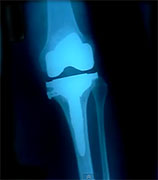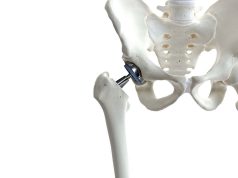Tibiofemoral and patellofemoral MRI-OA evident in substantial number of patients in post-surgery knee
WEDNESDAY, Feb. 25, 2015 (HealthDay News) — At one year post-anterior cruciate ligament reconstruction (ACLR), knee osteoarthritis (OA) is evident among a substantial proportion of patients, according to a study published online Feb. 18 in Arthritis & Rheumatology.
Adam G. Culvenor, P.T., from the University of Queensland in Brisbane, Australia, and colleagues determined the prevalence and factors associated with knee OA defined by magnetic resonance imaging (MRI) and characterized specific MRI-OA features one year after ACLR. At one year post-ACLR, isotropic 3.0 Tesla MRI scans were obtained for 111 participants and 20 age-, sex-, and activity level-matched uninjured controls. Specific MRI features were scored using the MRI OsteoArthritis Knee Score.
The researchers found that medial and lateral tibiofemoral MRI-OA were observed in 6 and 11 percent of participants, respectively, following ACLR, while 17 percent had patellofemoral MRI-OA. The region most affected by bone marrow lesions, cartilage lesions, and osteophytes was the femoral trochlea (19, 31, and 37 percent of participants, respectively). MRI-defined tibiofemoral OA and osteophytes were predicted by meniscectomy at the time of ACLR (odds ratio, 6.8) and body mass index above 25 kg/m² (odds ratio, 3.0), respectively. The odds of patellofemoral osteophytes were increased for men (odds ratio, 6.3). None of the uninjured controls had tibiofemoral or patellofemoral MRI-OA and specific OA features were uncommon.
“Osteoarthritis one year following ACLR was more common than previously recognized, while being absent in uninjured control knees,” the authors write.
One author disclosed financial ties to the pharmaceutical and medical device industries.
Copyright © 2015 HealthDay. All rights reserved.








